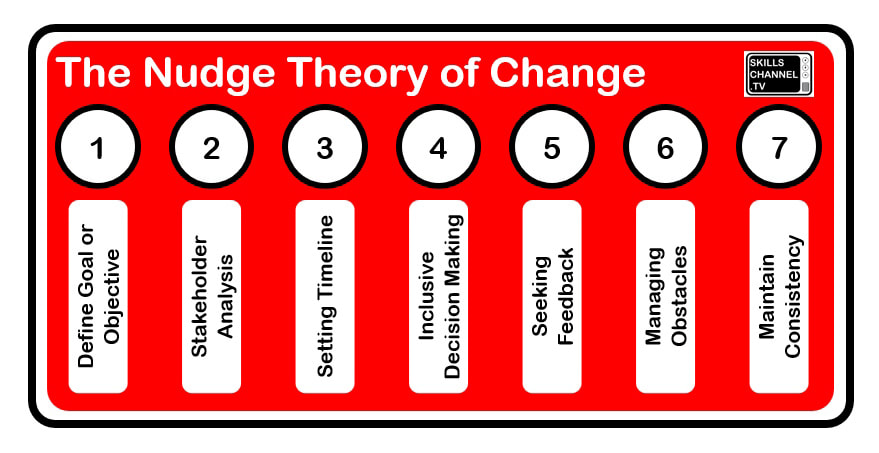|
Nudge Theory
What is Nudge Theory? Nudge Theory is a concept with the aim to influence people to make better decisions. The thoughts behind the theory is that decision-making should be based on people's real thoughts and decision processes, which are instinctual and sometimes illogical, rather than how leaders and managers have historically assumed people think and decide (logically and rationally). Nudge Theory, often referred to as "nudging," is a concept in behavioural economics and political science that involves using positive reinforcement and indirect suggestions to influence the behaviour and decision-making of individuals or groups. It was popularized by the book Nudge: Improving Decisions About Health, Wealth, and Happiness by Richard Thaler and Cass Sunstein in 2008. The key idea behind Nudge Theory is that people's decisions and behaviours can be influenced in predictable ways without restricting their choices or imposing significant economic incentives or penalties. Nudges aim to guide individuals toward making better choices for themselves, society, or the environment by altering the way options are presented to them. Examples of nudges include: Default Options: Setting a desirable choice as the default option, such as organ donation, where individuals are automatically registered as donors unless they opt out. Informational Nudges: Providing clear and easily understandable information to help individuals make informed decisions, like nutritional labels on food products. Feedback: Offering feedback on behaviour to encourage desired actions, such as energy usage reports to reduce electricity consumption. Social Norms: Informing people about what the majority of their peers are doing to encourage conformity with positive behaviours. Timing: Timing messages or reminders at critical moments when people are more likely to act, like sending tax return reminders close to the tax deadline. Nudge Theory has been applied in various fields, including public policy, marketing, healthcare, and environmental conservation, with the goal of promoting healthier, more sustainable, and socially beneficial choices. Critics argue that while nudges can be effective in many cases, they also raise ethical concerns about individual autonomy and potential government or corporate manipulation. Overall, Nudge Theory is based on the idea that small changes in how choices are presented can significantly influence human behaviour without resorting to coercion or heavy-handed interventions. How do you use Nudge Theory? Nudge Theory doesn't have a universally agreed-upon model or set of stages, but the concept typically involves a series of steps or principles that guide the application of nudges to influence behaviour. Here's a simplified breakdown of seven stages for organisational change that can help you understand the process:
It's important to note that the stages of nudge theory may vary in practice, and the process can be iterative, with adjustments made based on the results and feedback obtained at each stage. Additionally, ethical considerations and transparency are essential when using Nudge Theory to influence behaviour, as it involves a degree of choice architecture that may affect individual autonomy. Alec McPhedran Chtd Fellow CIPD, Chtd Mngr CMI, MAC, MCMI is the managing director of Skills Channel TV, a training company for talented creative people. He specialises in one to one coaching, facilitated learning, media training and team development. For further information, contact 0121 366 87 99 or visit www.skillschannel.tv. Copyright © Alec McPhedran 2023
0 Comments
|
AuthorA trainer, coach and facilitator helping people acheive. Archives
November 2023
Categories
All
|

 RSS Feed
RSS Feed
